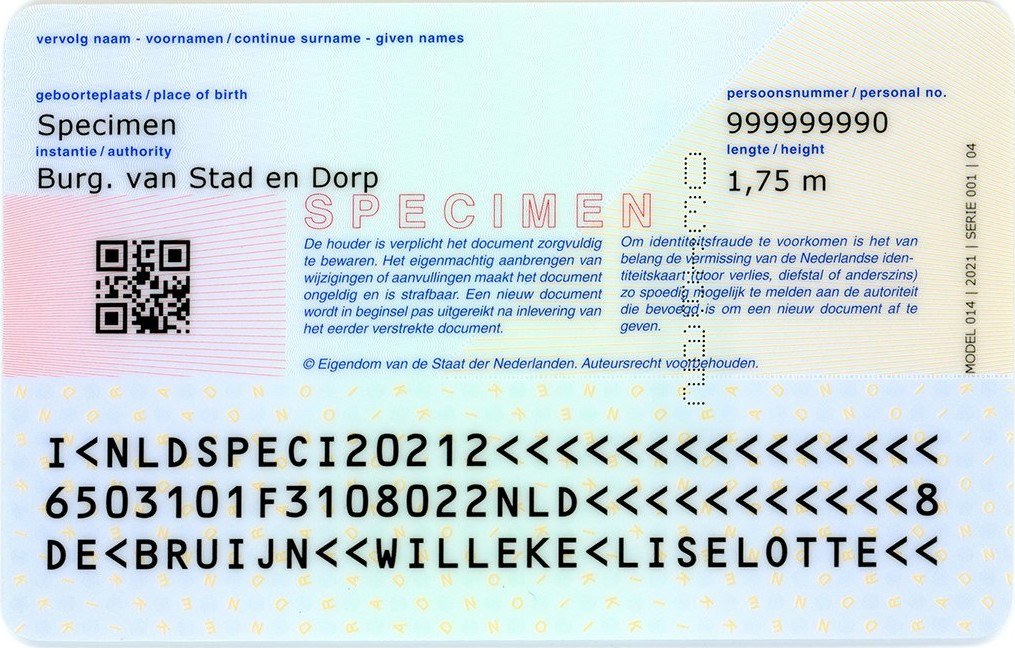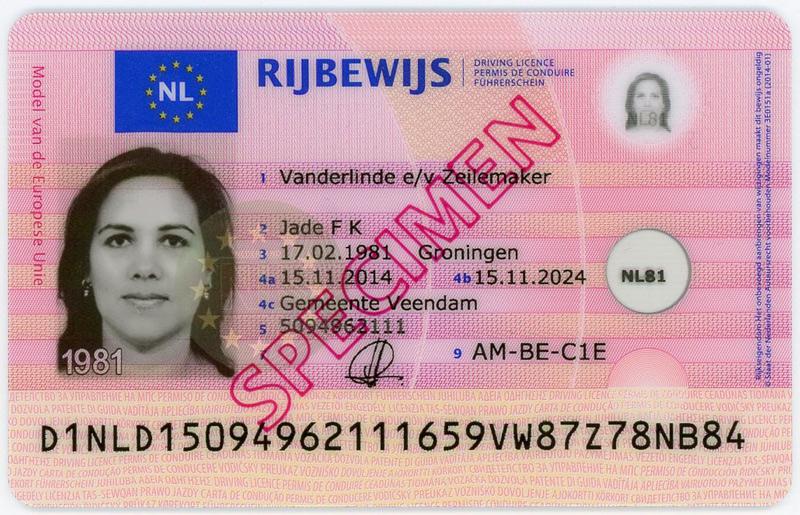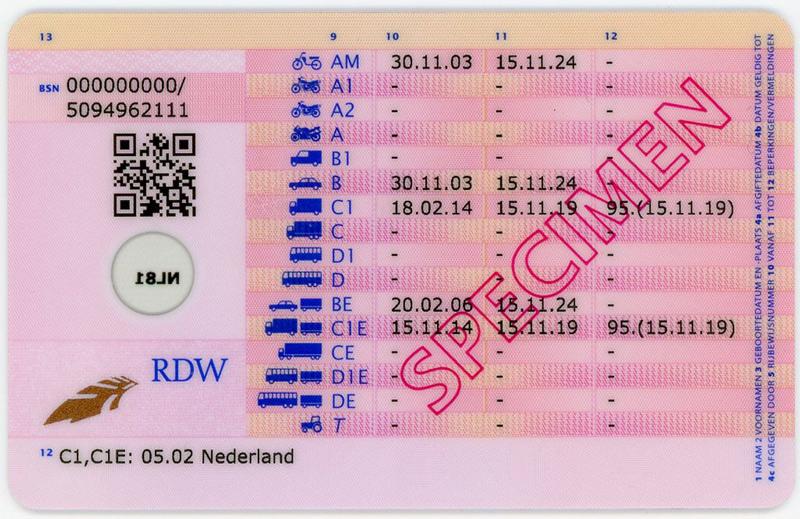Netherlands TIN number guide
Citizen service number (BSN)(Burgerservicenummer)
The Citizen Service Number (BSN) is an exclusive personal identifier assigned to individuals registered in the Personal Records Database (BRP). Automatic allocation of a BSN occurs for every individual upon registration with the BRP.A BSN is comprised of 8 or 9 digits.The citizen service number has replaced the tax and social insurance number (sofinummer).
BSN Format The Dutch Tax Identification Number (TIN) consists of 9 digits, for example, 999999999. It adheres to specific validation rules and a check digit verification process outlined as follows:
The TIN always comprises 9 digits: N1, N2, N3, N4, N5, N6, N7, N8, N9, where N9 serves as the check digit.
Algorithm for check digit calculation: ((N19) + (N28) + (N37) + (N46) + (N55) + (N64) + (N73) + (N82)) modulo 11 Check digit (N9) equals the remainder from the above algorithm.
 |  |
| ID card Front | ID card Back |
 |  |
| Driving license Front | Driving license Back |
Official Database - BSN Search . This requires a login using DigiD.
Official Database - Handelsregister for enitity search
Btw-identificatienummer (btw-id)
Commonly known as VAT identification (VAT ID), btw-id is a crucial component in your interactions with customers and suppliers, signifying your status as a VAT-registered entrepreneur. This identifier, consisting of specific elements, is utilized on your stationery, invoices, and website to highlight your VAT registration.
Btw-id Format
The format of VAT ID in Netherlands is as follows:
- Country code: NL
- 9 digits
- Letter B
- 2 digits, commonly referred to as 'subnumber'
An illustration of a VAT ID is NL123456789B01.
Omzetbelastingnummer (ob-nummer)
The VAT (sales) tax number(Omzetbelastingnummer), also known as the turnover tax number, is composed of either the Legal Entities and Partnerships Information Number (RSIN) or your Citizen Service Number (BSN). Following this, there is a code consisting of 3 characters, falling between B01 and B99. An illustrative example is 123456789B01. This particular number is utilized in all communication with the Tax Administration.
Ob-nummer Format
The sales tax number, also referred to as the OB number, is exclusively employed when you get in touch with the tax authorities, be it through writing a letter or calling the Tax Telephone. The format of your OB number is as follows:
- 9 digits, which are the Citizen Service Number (BSN) if you are self-employed
- The letter B
- 2 digits, also known as the 'subnumber'
An illustrative example of an OB number is 111234567B01.
Kamer van Koophandel nummer (KVK)
The Kamer van Koophandel (KVK) is the Chamber of Commerce in the Netherlands.Upon registering your business in the Dutch Business Register (Handelsregister), you are assigned an 8-digit KVK number. This KVK number serves as evidence of your registration with the Netherlands Chamber of Commerce (KVK), affirming your official business status. Merchants are obliged to state the KVK number on: letters, invoices, quotations, websites, business emails.
When you register your company with the Dutch Chamber of Commerce (KVK), you receive your KVK number, an 8-digit identifier that appears on your Business Register extract, serving as proof of your business registration with the KVK. Subsequently, the Tax and Customs Administration (Belastingdienst) is notified by KVK, and within 3 weeks, you are sent your VAT (btw) identification number (btw-id) and VAT number (btw-nummer) by post. The VAT number, consisting of 14 digits, includes the btw-id. Both the KVK number and VAT number are mandatory to be included on your invoices, with the KVK number obtained during the initial registration and the VAT number provided afterward for tax-related transactions.
Official database - KVK Search
How Lookuptax can help you in VAT validation?
Lookuptax VAT validation revolutionizes VAT number validation with its robust platform, empowering businesses to seamlessly verify VAT numbers across over 100 countries. Our cutting-edge technology ensures accurate and efficient validation, reducing errors and enhancing compliance.
